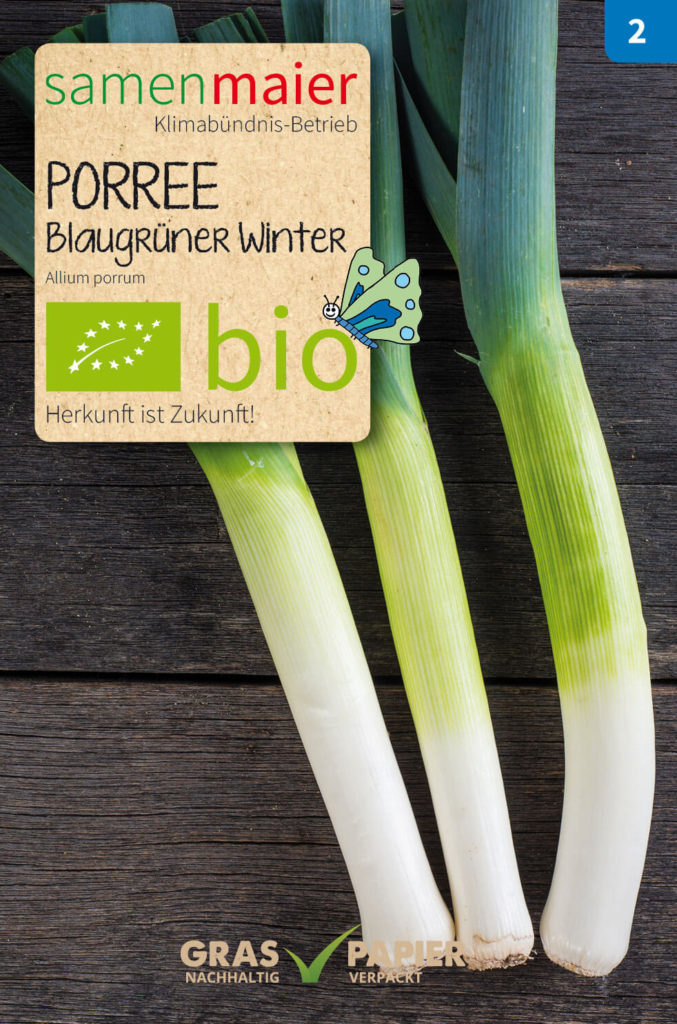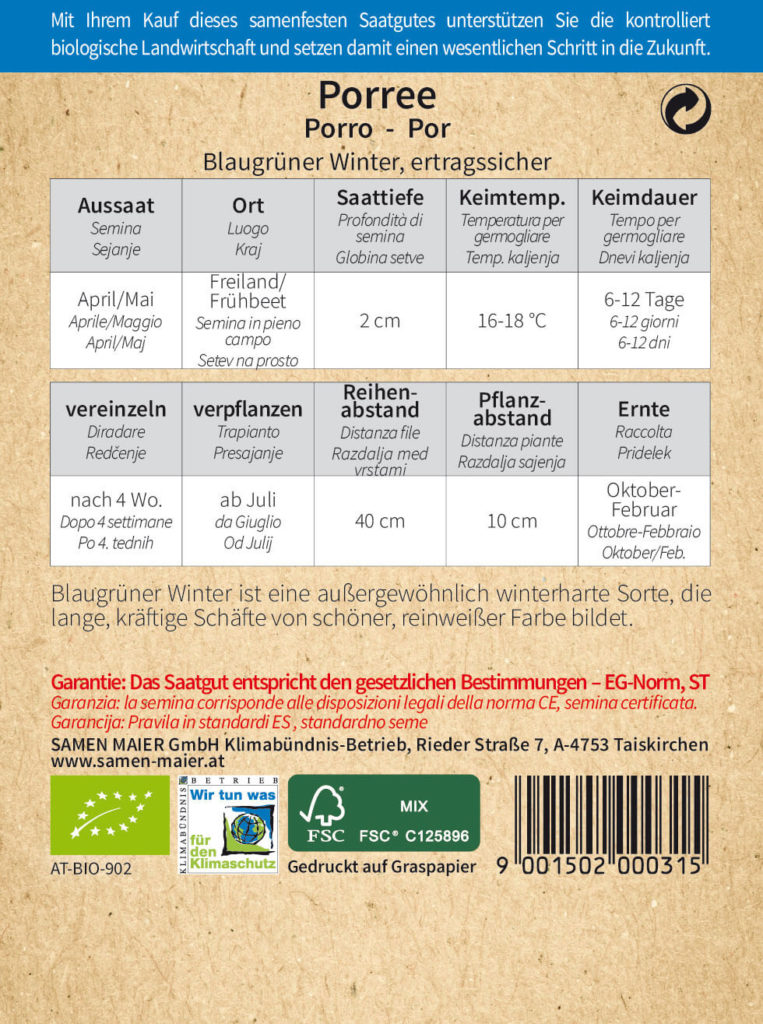Planning the Vegetable Bed
Successful harvest around the year
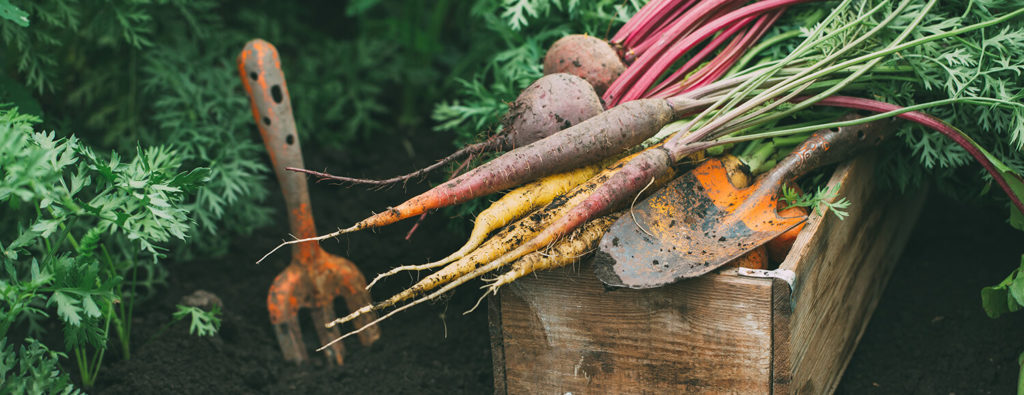
Outside, it’s a roller coaster of frosty and warm days, frozen and muddy ground. Whatever the weather in your region, use this time to plan and prepare for the next gardening season.
Good and thoughtful planning is half the way to a bountiful harvest from your vegetable patch. With it, you avoid, in the first euphoria of spring, your beds crisscross with all those seeds and seedlings that have just caught your eye. Because that inevitably leads to a mess in your bed in a few weeks. The result: the plants can not develop properly, have too little space and are susceptible to diseases and pests.
Before “proper” planning, begin
with the following considerations:
What vegetables do you want to grow?
Make a list of all the vegetables and varieties that you would like to grow yourself. Include your favorite vegetables as well as those that your family enjoys. Include your children in the selection, because even the little ones prefer to eat vegetables that they have harvested themselves.
Also write down rare or exotic vegetables and varieties that you have always wanted to try. Make sure you have a good balance of “classic” vegetables that you can use in everyday life.
Consider which vegetables you like fresh from the garden, e.g. crisp lettuce, sun-ripened tomatoes or spicy radishes. Other vegetables you may prefer to buy at the Organic market, for example: Storage vegetables like celery, squash or beets.
How much space do you have?
Don’t worry, even if you don’t own a huge vegetable garden, you can still get a great harvest with some smart planning. Nevertheless, get an overview of the cultivation area that is available to you. It is best to summarize the area in square meters, e.g. 2 m² raised bed, 4 m² growing area on the balcony (for this you add up boxes, troughs and pots), 5 m² vegetable garden, and so on. If you grow a lot in boxes and pots, make a note not only of the area but also of the depth of the containers – so that later the plants have enough space for their roots. For example, you can grow lettuce in balcony boxes with a depth of 10-15 cm, and tomatoes in troughs with a depth of 30-40 cm.
How much time do you have available?
No question, you need time for your vegetables. When sowing and planting a little more, but also the ongoing care, such as weeding, untying, collecting pests and watering takes time.
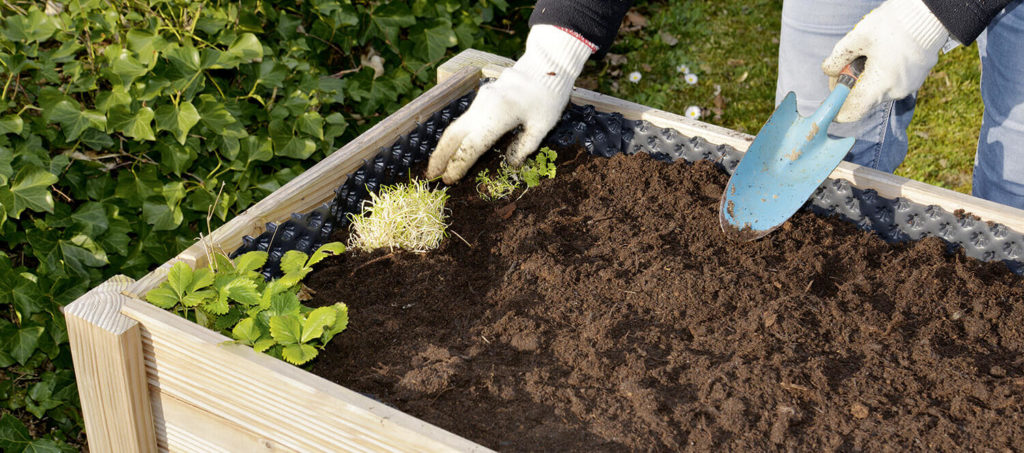
As a rule of thumb: for a raised bed and balcony pots of 2m² the care effort is about 15-30 min/week. For a soil bed of the same area you need about 30-40 min/week. In addition, the watering of about half an hour a week.
So when planning, also think about the time you can and like to spend regularly in your garden. After all, a 10 m² bed requires 5-6 weekly hours of your attention, including watering.
So if you have little time, better start with a small area, for example, a raised bed of 2m².
How to plan your vegetable garden year
Space again – this time for vegetables
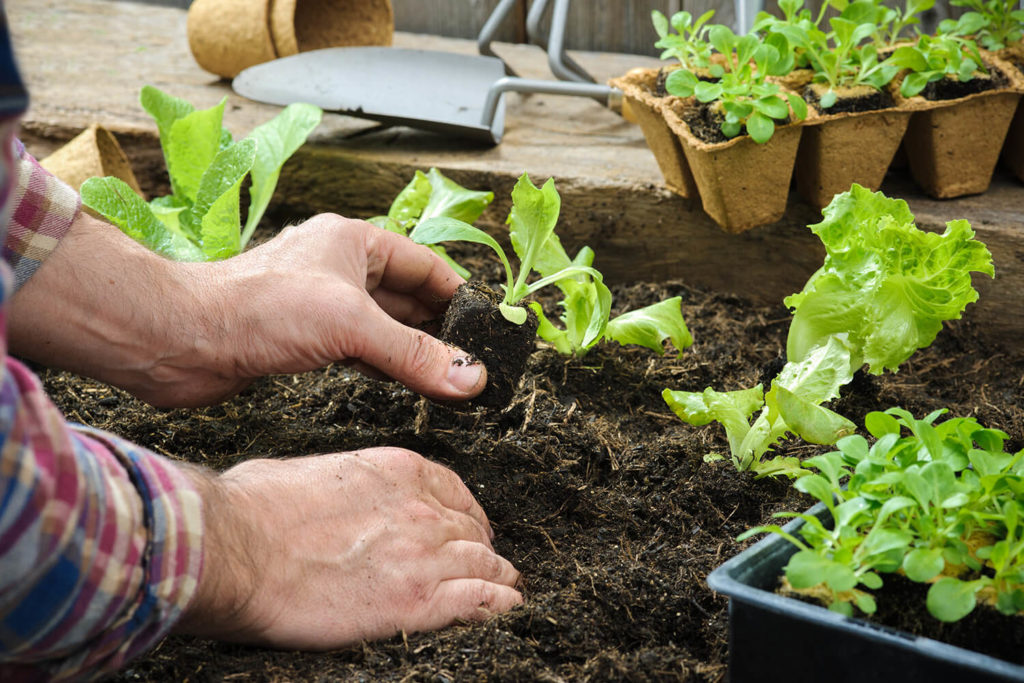
Plants need enough space to develop well. The most common mistake – not only with beginners – is to put the vegetables too closely. Because the tiny seed or young plant will very soon become a full-grown vegetable that takes up enough (free) space all around.
On the back of each seed packet you will find the exact space requirement/plant.
-
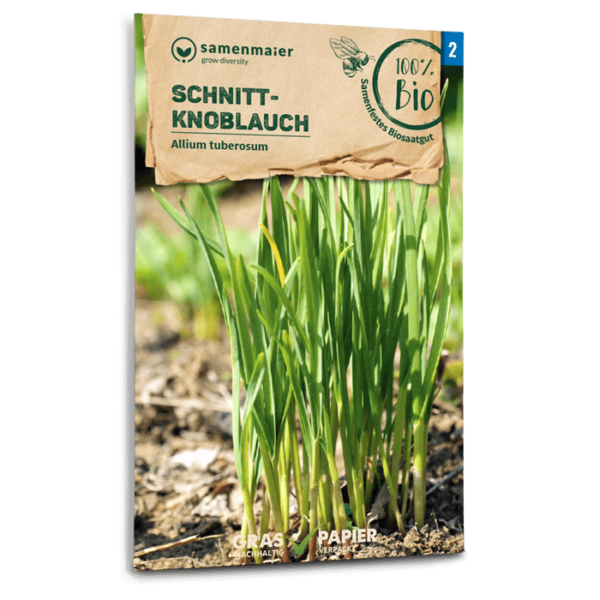 Organic garlic chives€ 2.99
Organic garlic chives€ 2.99incl. 10% VAT
Keine Versandkosten ab € 20 Warenkorb
-
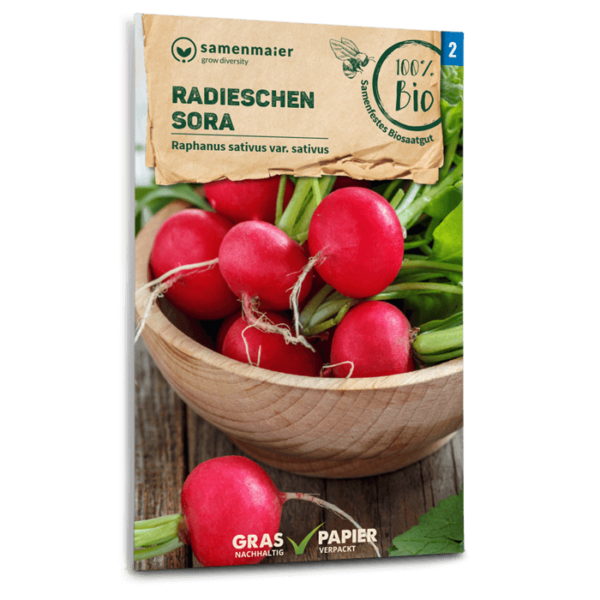 Organic Sora radish€ 2.99
Organic Sora radish€ 2.99incl. 13% VAT
Keine Versandkosten ab € 20 Warenkorb
-
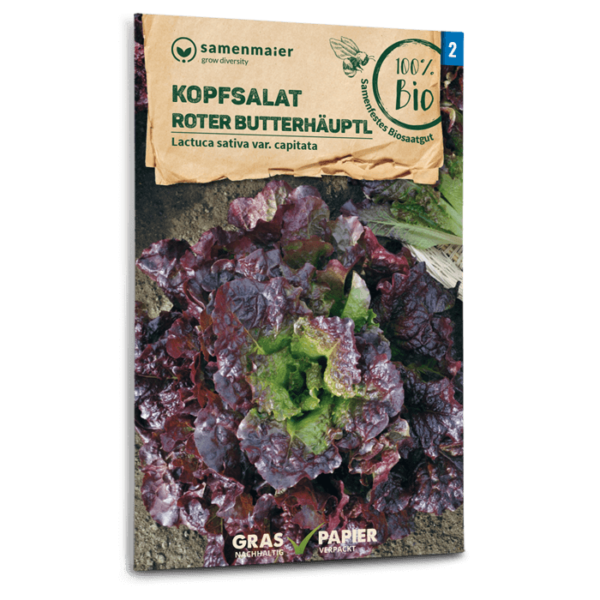 Organic Head Lettuce ‘Roter Butterhäuptel’€ 2.99
Organic Head Lettuce ‘Roter Butterhäuptel’€ 2.99incl. 13% VAT
Keine Versandkosten ab € 20 Warenkorb
-
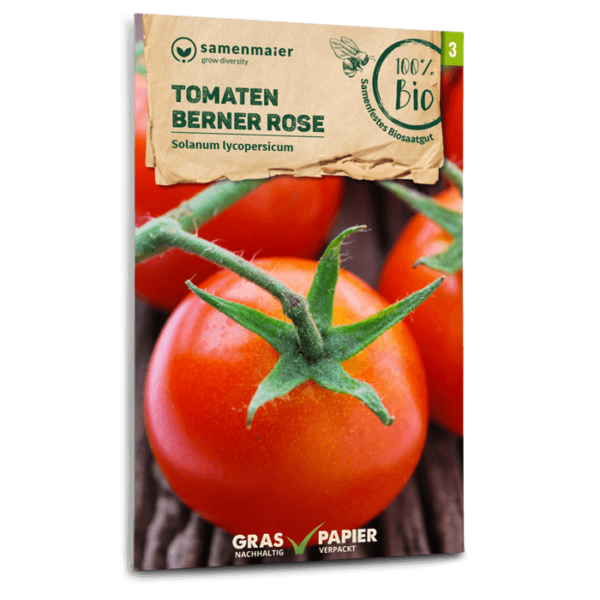 Organic Tomatoes Berner Rose€ 3.99
Organic Tomatoes Berner Rose€ 3.99incl. 13% VAT
Keine Versandkosten ab € 20 Warenkorb
-
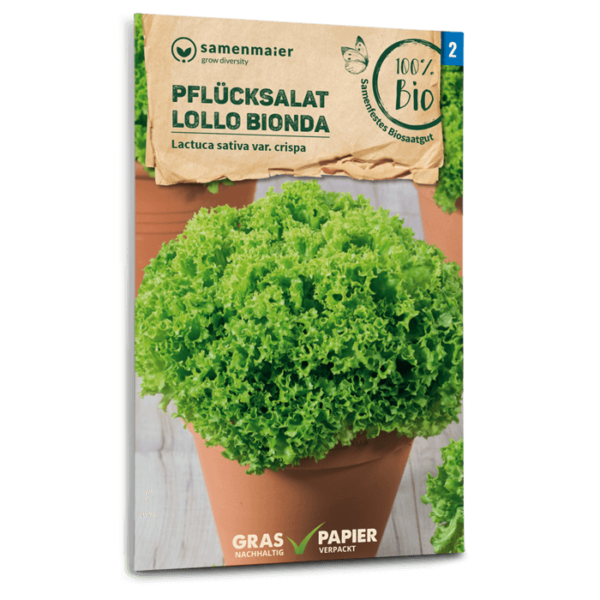 Organic Looseleaf Lettuce Lollo Bionda€ 2.99
Organic Looseleaf Lettuce Lollo Bionda€ 2.99incl. 13% VAT
Keine Versandkosten ab € 20 Warenkorb
-
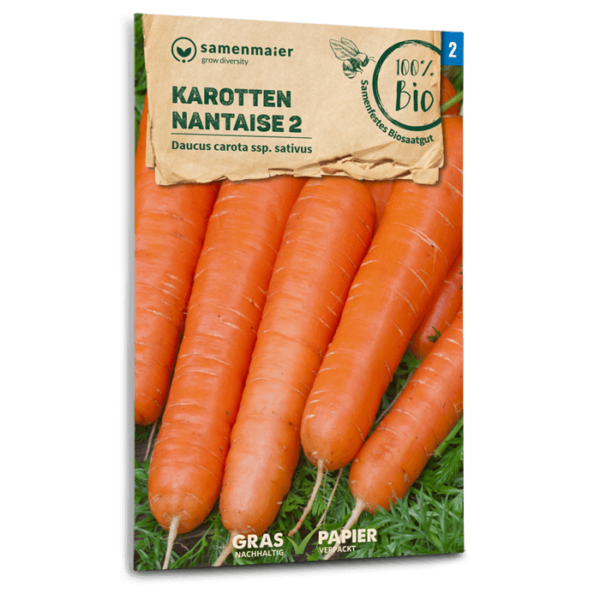 Organic Carrots Nantaise 2€ 2.99
Organic Carrots Nantaise 2€ 2.99incl. 13% VAT
Keine Versandkosten ab € 20 Warenkorb
As you can see from the information, the different types of vegetables need different amounts of space. For example, in the same area you can accommodate many more radishes and carrots than tomatoes and broccoli plants.
| Vegetable | Spacing in the row | Spacing between rows | set isolated on / as a seedling |
|---|---|---|---|
| Broccoli | 50 cm | 50 cm | set as a seedling |
| Lamb’s lettuce | in a row | 10 cm | |
| Carrot | 2-3 cm | 25 cm | 5-7 cm |
| Lettuce | 30 cm | 30 cm | 30 cm or set as a seedling |
| Leek | 10 cm | 20-40 cm | 10 cm or set as a seedling |
| Bell pepper | 40 cm | 50 cm | set as a seedling |
| Picking lettuce | in a row or 30 cm | 30 cm | thin out to 20-30 cm |
| Radish | 4-5 cm | 8-10 cm | 5-7 cm |
| Tomato | 60 cm | 60 cm | set as a seedling |
From the right time
In addition to sufficient space, the right time or period of cultivation is essential for the plant. Radishes, carrots and lettuce can be planted from March, broccoli, tomatoes or peppers from May, leek from March or July, lamb’s lettuce from August to September. The fact that you do not plant all the plants at the same time is good news. This way you can stagger the vegetables and avoid empty beds. It is the same with the harvest. You can harvest the first vegetable plants such as lettuce or radishes before the main planting season in May, i.e. when the more heat-loving plants such as peppers, tomatoes, broccoli, zucchini and the like are allowed outdoors. Even after the late summer harvest of tomatoes and the like, you can still grow something to get fresh vitamins from your bed in late fall and winter.
Seed or seedling
Last but not least, consider which vegetables you sow directly and which are better grown in advance. Some plants are exclusively seeded, others can be seeded or preplanted, and other plants are only set as seedlings. Of our sample plants, carrots and radishes are directly sown, lettuce, beet and broccoli can be both directly sown and pre-planted, peppers and tomatoes are only planted as seedlings.
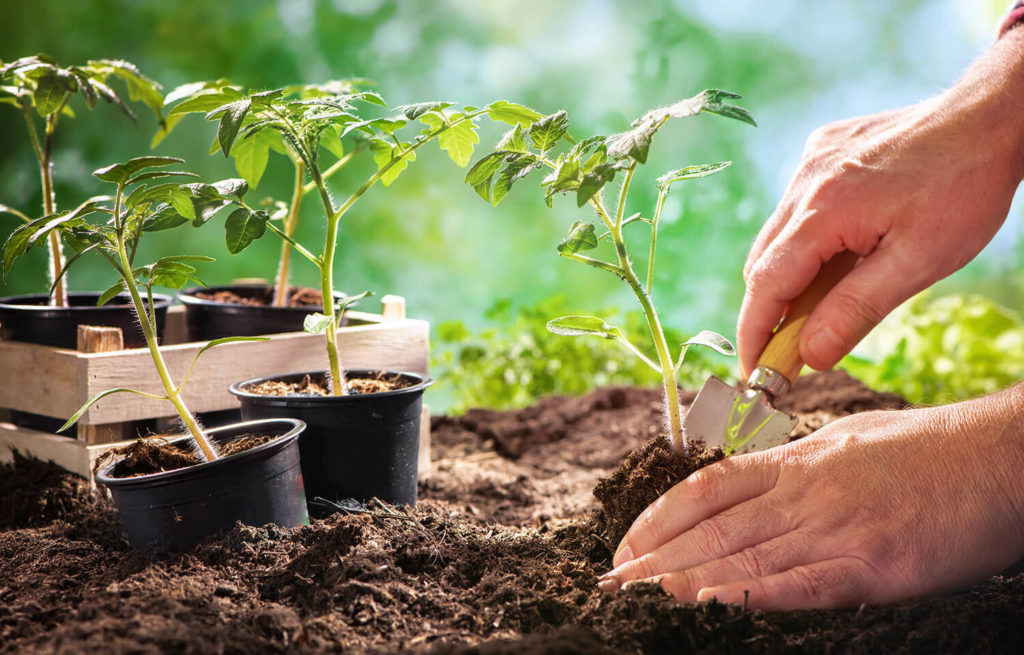
Create an annual plan
Fasse deine gewonnenen Erkenntnisse in einem Jahresplan zusammen.
Hier ein Beispiel für einen Plan für ein Beet mit 1 x 2 m Größe.
Bed from March
| Vegetable | Sowing | Pre-plant | Set seedling | Harvest | Rows | Spacing in the row | width of the row | Total width of rows |
|---|---|---|---|---|---|---|---|---|
| Radishes | March | April-May | 1.-3. | 4-5 cm | 10 cm | 30 cm | ||
| Lettuces | February | March | May | 4. | 30 cm | 30 cm | 30 cm | |
| Carrots | March | July | 5.-6. | 2-3 cm | 25 cm | 50 cm | ||
| Picking Lettuces | March | July | 7. | in a row | 30 cm | 30 cm | ||
| Picking Lettuces | March | Mid May | 8. | in a row | 30 cm | 30 cm | ||
| Radishes | March | April-May | 9.-11. | 4-5 cm | 10 cm | 30 cm | ||
| Total rows | 200 cm |
Bed from May
| Vegetable | Sowing | Pre-plant | Set seedling | Harvest | Rows | Spacing in the row | width of the row | Total width of rows |
|---|---|---|---|---|---|---|---|---|
| Tomatoes | March | Mid May | July-September | 1.-4. | 50-60 cm | 60 cm | 60 cm | |
| Carrots | remain still | 5.-6. | 50 cm | |||||
| Bell Peppers | March | Mid May | July-September | 7.-8. | 40 cm | 40 cm | 40 cm | |
| Broccoli | March | Mid May | July-September | 8.-11. | 50 cm | 50 cm | 50 cm | |
| Total rows | 200 cm |
Bed from July
| Vegetable | Sowing | Pre-plant | Set seedling | Harvest | Rows | Spacing in the row | width of the row | Total width of rows |
|---|---|---|---|---|---|---|---|---|
| Tomatoes, Bell Peppers und Broccoli | remain still | 150 cm | ||||||
| Leeks | End of May | July | November to February | 5.-6. | 10 cm | 25 cm | 50 cm | |
| Total rows | 200 cm |
Bed from September
| Vegetable | Sowing | Pre-plant | Set seedling | Harvest | Rows | Spacing in the row | width of the row | Total width of rows |
|---|---|---|---|---|---|---|---|---|
| Leek | remain still | 50 cm | ||||||
| Lamb’s lettuce | September | from November to February | 1.-4. and 7.-11. | 150 cm | ||||
| Total rows | 200 cm |
As you can see, sometimes you need to change the spacing between the rows a little. Be careful not to run out of space – to be on the safe side, it’s better to give a plant too much space than too little.
With your plan, you now have a clear view of when to grow, advance or harvest which vegetables.

